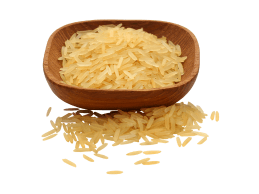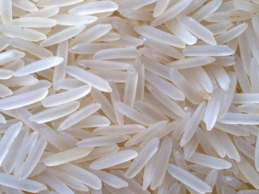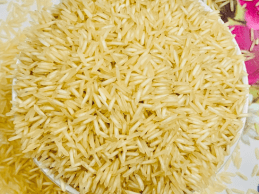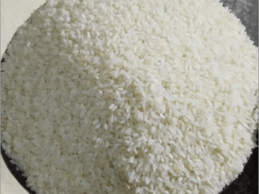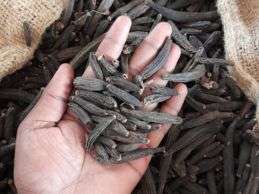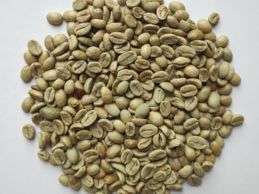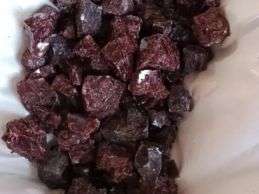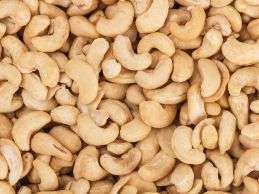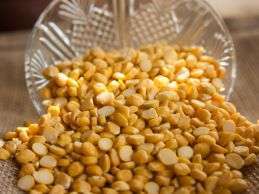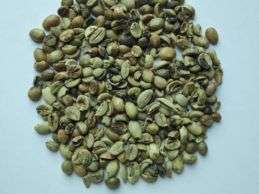All varieties of 1509 long grain rice
The 1509 Basmati rice variety is highly esteemed for its distinct characteristics and premium quality. Here's an overview of its key features, types, culinary uses, and advantages:
Key Features of 1509 Basmati Rice:
- Extra-Long Grain:
- Known for exceptionally long grains, reaching up to 8.4 mm, characteristic of premium Basmati rice.
- Aromatic:
- Offers a subtle and pleasant aroma, typical of Basmati rice, enhancing the flavor of dishes.
- Non-Sticky Texture:
- Grains remain separate and fluffy after cooking, ideal for various culinary preparations.
- High Yield:
- Favoured by farmers for its high yield, contributing to its popularity and availability.
- Quick Cooking:
- Cooks faster compared to other Basmati varieties, saving time during meal preparation.
- Nutritional Value:
- Provides essential nutrients, including carbohydrates, vitamins, and minerals.
Types of 1509 Basmati Rice:
- 1509 White/Creamy Sella Basmati Rice:
- Processing: Parboiled before milling.
- Features: Golden hue, firm texture, non-sticky when cooked.
- Uses: Ideal for biryanis, pilafs, and festive dishes.
- 1509 Golden Sella Basmati Rice:
- Processing: Parboiled with a unique steaming process, resulting in a golden color.
- Features: Retains nutrients, firm grains, non-sticky texture.
- Uses: Suitable for gourmet dishes, biryanis, and special occasions.
- 1509 Steam Basmati Rice:
- Processing: Steamed before milling to preserve natural aroma and nutrients.
- Features: White grains, aromatic, less processed than Sella.
- Uses: Versatile for everyday meals and special recipes.
- 1509 Raw Basmati Rice:
- Processing: Milled without pre-treatment like steaming or parboiling.
- Features: Natural white color, extra-long grains, delicate texture, aromatic.
- Uses: Perfect for softer-textured dishes, plain rice, or as a base for curries.
Culinary Uses:
1509 Basmati rice is adaptable and enhances various dishes, including:- Biryani
- Pilaf (Pulao)
- Fried rice
- Plain boiled rice
- Salads
Advantages:
- Cost-Effective: Affordable compared to other premium Basmati varieties.
- Efficient Cooking: Quick cooking time saves energy and effort.
All varieties of Kaima rice
Kaima rice, also known as Jeerakasala rice, is a renowned non-Basmati rice variety hailing from Kerala, India, cherished for its distinctive qualities and culinary versatility:
Key Features of Kaima (Jeerakasala) Rice:
Short-Grain Nature:
Kaima rice stands out with its short, plump grains, a departure from the longer Basmati grains.
Aromatic Profile:
It boasts a rich aroma that enhances the fragrance of dishes it is used in.
Fluffy Texture:
Upon cooking, Kaima rice achieves a soft, fluffy consistency while maintaining its grain integrity without becoming mushy.
Distinctive Flavor:
It offers a unique taste that complements both vegetarian and non-vegetarian preparations, adding depth to culinary creations.
Nutritional Value:
High in carbohydrates, Kaima rice also provides essential nutrients like proteins, vitamins, and minerals.
Culinary Uses:
Biryani:
Integral to Malabar Biryani, Kaima rice enhances the dish with its aromatic and flavorful grains.
Pulao:
Ideal for Pulao preparations, where it absorbs spices and vegetable flavors excellently.
Payasam:
Used in Payasam (Indian rice pudding), contributing its aroma and texture to the dessert's richness.
Traditional Kerala Dishes:
Commonly featured in Kerala's traditional cuisine, including Ghee Rice, prepared with clarified butter and spices.
Daily Fare:
While often reserved for special occasions, Kaima rice is also enjoyed in everyday meals, paired with curries and sides.
Kaima rice stands as a testament to Kerala's culinary heritage, prized for its aromatic essence and adaptability across a spectrum of dishes, both festive and routine.
Aloe Harad Pachak
Aloe Harad Pachak is a traditional Ayurvedic digestive supplement renowned for its role in promoting gastrointestinal health and aiding digestion. Here's an in-depth overview:
Key Ingredients:
- Aloe Vera (Aloe barbadensis)
- Benefits: Known for its soothing and anti-inflammatory properties, Aloe Vera helps to calm the digestive tract, reduce inflammation, and support overall digestive health.
- Harad (Terminalia chebula)
- Benefits: Also referred to as Haritaki, Harad is a potent Ayurvedic herb valued for its laxative, astringent, and rejuvenating qualities. It aids in relieving constipation, enhancing digestion, and detoxifying the body.
- Other Herbs and Spices
- Ingredients: Typically includes a blend of digestive herbs like ginger, fennel, cumin, and black salt.
- Benefits: These ingredients work synergistically to stimulate digestive enzymes, alleviate gas and bloating, and improve overall digestive function.
Benefits:
- Enhances Digestion:
- Facilitates the activation of digestive enzymes, thereby improving the breakdown of food and enhancing nutrient absorption.
- Relieves Constipation:
- The combination of Aloe Vera and Harad acts as a natural laxative, promoting regular bowel movements and alleviating constipation.
- Detoxification:
- Harad's detoxifying properties help cleanse the digestive tract, aiding in the elimination of toxins from the body.
- Reduces Gas and Bloating:
- The herbal blend helps minimize gas formation and bloating, providing relief from discomfort and promoting gastrointestinal comfort.


